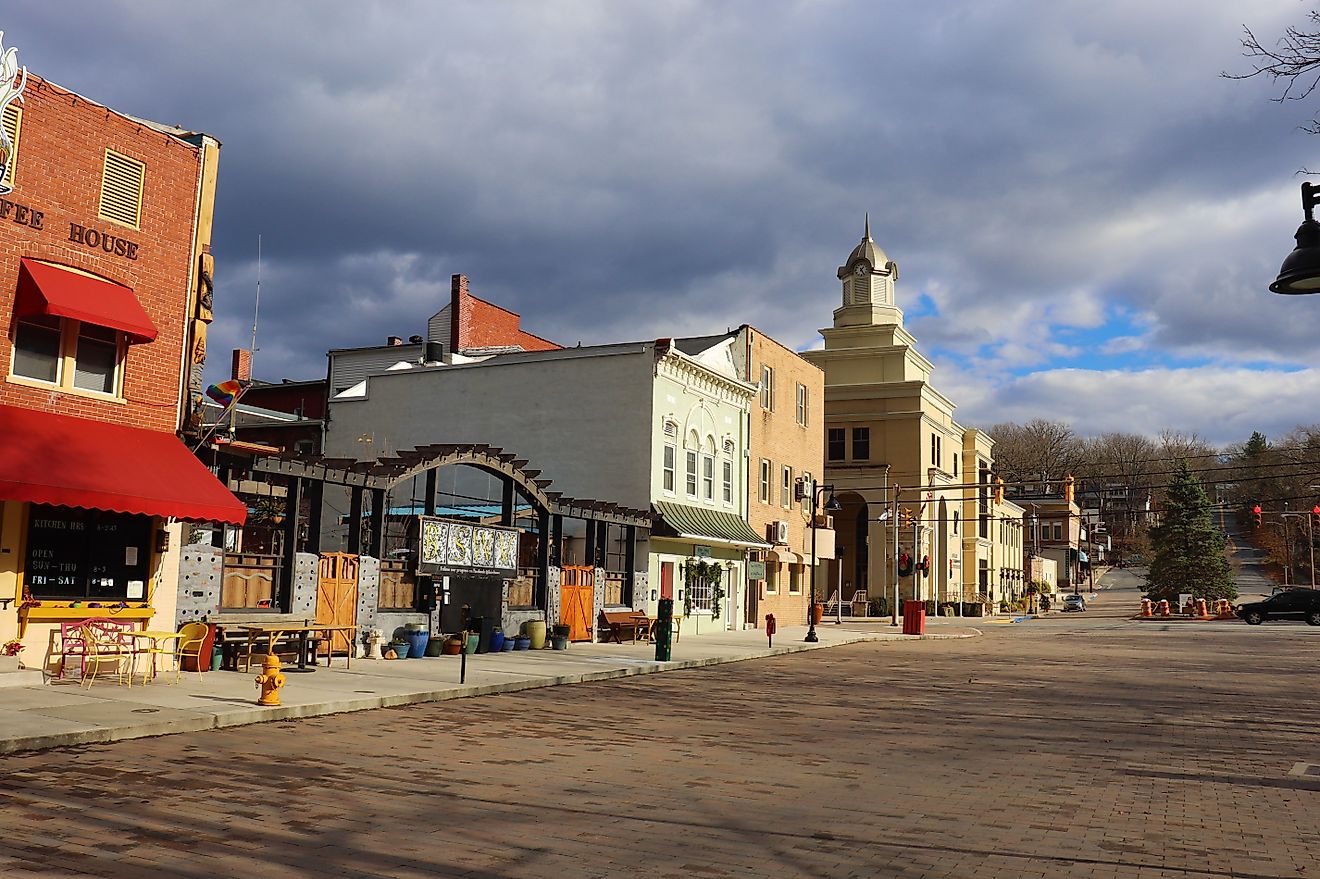
Nantucket, Massachusetts
Nantucket is a small island situated approximately 50km to the south of Cape Cod in Massachusetts, United States. The Nantucket Island is coterminous with the Nantucket town, and along with the smaller islands of Muskeget and Tuckernuck, it forms the Town and County of Nantucket. The Town and County of Massachusetts is the only such consolidated town-county located in the US State of Massachusetts. A portion of the Nantucket town has been designated as the Nantucket census-designated place. As per the 2020 census, Nantucket Island has a population of 14,255 inhabitants, which increases to about 50,000 people due to the high number of visitors that visit this well-known tourist destination during the summer months.
Geography Of Nantucket

The Nantucket County covers a total area of 790 sq. km, of which 670 sq. km is occupied by water, and 120 sq. km is occupied by land. Nantucket is considered the second-smallest county by total area and the smallest county by land area in the US State of Massachusetts. The Nantucket Island proper covers an area of 124 sq. km. The Nantucket Sound is a triangular area of the Atlantic Ocean surrounded by the Cape Cod in the north, Martha’s Vineyard in the west, and Nantucket Island in the south. The principal settlement of Nantucket Island, also referred to as Nantucket, is situated at the western tip of the commodious Nantucket Harbor. Some of the highest points on the Nantucket Island include Saul’s Hill at 31m, Altar Rock at 30m, and Sankaty Head at 28m. Miacomet, Madaket, Polpis, Siasconset, Wauwinet, and Surfside are some of the prominent localities on Nantucket Island. The Spring Daffodil Festival and the Cranberry Harvest Weekend are some of the most famous annual celebrations on Nantucket Island.

Geologists believe that Nantucket Island was formed during the Wisconsin Glaciation by the outermost reach of the Laurentide Ice Sheet. The low ridge located across the northern part of the island was deposited as glacial moraine. In contrast, the island’s southern portion is an outwash plain that has been formed of glaciofluvial deposits. It is estimated that about 5,000 to 6,000 years ago, Nantucket became an island after the rising sea levels covered its link with the mainland.
Climate
As per the Köppen climate classification, Nantucket Island experiences a climate between oceanic and humid continental climates. The Atlantic Ocean greatly influences the climate of Nantucket Island and helps to moderate the temperatures throughout the year. Nantucket experiences mild, damp, and windy summers and cold, wet and windy winters. The island also experiences many cloudy days, similar to many other areas that experience an oceanic climate. The warm season lasts from June to September, and August is the hottest month, with an average high temperature of 24°C. The cold season lasts from December to March, and January is the coldest month, with an average temperature of 3°C. Nantucket receives an average annual precipitation of 1,000mm that is spread evenly throughout the year. Therefore, the best time to visit Nantucket is during the warm season, from late June to late September.
Demographics and Economy

As per the latest 2020 census, Nantucket is home to a population of 14,255 inhabitants. The island’s population has increased since the 2010 census, which showed that the island was home to 10,172 people. Nantucket Island has a population density of 115.1 inhabitants per sq. km. About 84.2% of Nantucket’s population is considered White, of whom most are non-Hispanic. The Hispanic group accounts for 15.2% of Nantucket’s population, African Americans at 11.3%, Asians at 2.0%, and American Indians at 0.4%. As per the latest census, there are 3,713 households in Nantucket, and the median income for a household in the county is $107,717.
Brief History

The name “Nantucket” has been derived from a Wampanoag word which forms a part of the native folklore that talks about the creation of Nantucket and Martha’s Vineyard. The island’s nickname “The Little Grey Lady of the Sea” refers to the appearance of the island from the ocean when fogs cover it. Before the arrival of the Europeans, the island was inhabited by the indigenous Niantic tribes. It is believed that the island’s name has been derived from the tribe’s common name – “Nehantucket.” In 1602, Nantucket Island was first visited by the English navigator Bartholomew Gosnold. In 1641, the English merchant Thomas Mayhew purchased the island from Plymouth County and administered it as a part of the Dukes County of the Province of New York. Thomas led several families to establish settlements in the area. The growing settlers also welcomed several Native American tribes who visited the island to fish and harvest whales. In 1687, the town of Nantucket was incorporated; in 1692, the island was transferred to the Province of Massachusetts Bay; and in 1695, the Nantucket County was formed. Micajah Coffin - the American mariner and Member of the Massachusetts House of Representatives, proposed a bill on June 8, 1795, to change the name to the “Town of Nantucket.” The bill was finally endorsed and signed by Governor Samuel Adams.
Just before the American Civil War, whaling reached its peak as one of the island’s most important industries, and the island then served as the home port of 125 whaling ships. However, after the war, the island’s whaling industry collapsed, and the Confederate forces destroyed all the remaining whaling vessels on the island. As a result, Nantucket Island became isolated and was left under-developed till the mid-20th century. Many pre-Civil War colonial buildings, lighthouses, etc., were left intact because of the island’s isolation, and in 1966, the National Park Service designated Nantucket as a “National Historic Landmark District.” In due course, with improved transportation facilities, Nantucket Island eventually developed as a popular summer tourist destination.











